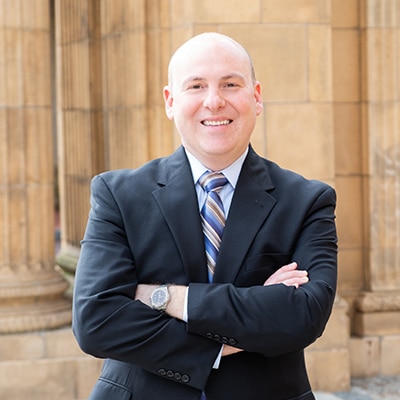With spring just around the corner and vaccinations well underway, there is a renewed feeling of hope in the restaurant industry to get back to some sort of “normalcy.” With that hope, there are many resources offered by the government for you to evaluate to assist in the recovery of your restaurant business. Since a lot has happened in the last few months, we want to take a moment and summarize what cash flow resources exist for your business and the strategy to consider.
Paycheck Protection Program Loan (PPP)
Most restaurants received a first-round PPP loan (PPP1) back in Spring 2020 and were able to spend it over a 24-week period, with most ending in the October 2020 timeframe. With the legislation enacted at the end of December 2020, a second-round PPP loan (PPP2) became available to first-round borrowers who experienced at least a 25% decline in gross receipts during any quarter in 2020 compared to the same quarter in 2019 along with the continued necessity for such loan. For restaurants, the PPP2 multiple was increased to 3.5x from 2.5x for PPP1. If you have not applied for PPP2 with your lender, the program is set to close again on March 31, 2021, so do not delay.
If you own a restaurant and file Schedule C on your tax return to report your business results, the rules changed in early March 2021 to allow you to use your gross income in the calculation. Many Schedule C filers were blocked previously due to having to use net profit/loss, which for many had been zero. Again, the deadline to apply for PPP2 is March 31, 2021.
Employee Retention Credits (ERC)
The ERC was not an option for many restaurant companies prior to the new legislation in late December 2020, as applicants for ERC could not also have a PPP loan. The new legislation removed this requirement so those with PPP loans could become eligible. There are many nuances to the ERC and there are different rules for 2020 and 2021; however, there are significant dollars associated with the ERC that should not be ignored. Most restaurants are eligible for the ERC based on having some type of partial suspension of operations due to indoor seating constraints caused by government-mandated social distancing requirements. There are some hoops to jump through to get the ERC based on whether you are a large employer or not. It is worth your time to evaluate whether your businesses qualify for the ERC. In addition, the latest legislation extended the ERC through December 31, 2021, clarified some of the nuances related to the interplay between ERC and PPP, and defined “nominal.”
There may be some strategies to consider in maximizing the ERC. Before filing for PPP loan forgiveness, it is important to determine whether you are eligible for the ERC. One important nuance is that wages forgiven as part of PPP loans are not eligible wages for the ERC. If you are eligible for the ERC, it is important to use payroll costs for only 60% of the PPP loan amount in order to maximize eligible wages to be used for ERC. Out of convenience, many PPP borrowers have used 100% of payroll to support PPP loan forgiveness, which made sense before ERC became a viable option.
Economic Injury Disaster Loan (EIDL)
The EIDL program was the original program offered at the beginning of the pandemic and offered disaster-related loans at favorable terms to the borrower prior to PPP. This program is still available to businesses and just received additional funding from the American Rescue Plan Act legislation.
For those businesses in communities designated as low-income along with meeting certain other criteria, the targeted EIDL advance program exists. These grants are equal to $1,000 per employee up to $10,000 and can be used to cover most operating expenses including rent, utilities, and fixed debt payments.
Restaurant Revitalization Fund (RRF)
Just last week the RRF was established with the enactment of the American Rescue Plan Act. This fund was set up to make operators whole for sales lost as a direct result of the pandemic; however, there are eligibility requirements to receive this grant. Eligibility is limited to foodservice and drinking establishments and cannot have more than 20 locations including affiliated entities as of March 13, 2020. This program is targeted at smaller restaurant operators. These funds can be spent on most operating expenses of the company. This is also the first program that is available to restaurant operators that opened after February 15, 2020, as the PPP program had a requirement of being in business as of February 15, 2020.
Big picture, this grant is equal to your 2019 gross receipts less your 2020 gross receipts less PPP1 and PPP2 loans. Variations to this calculation exist depending on when your business opened. The maximum grant is $10 million for multiple location operators and $5 million for a single location. These grants are completely tax-free to the recipients.
What we do not know right now is when this program will be up and running and whether the $28.6B set aside for it will be enough funds for all eligible. The Small Business Administration will be administering the program and needs to establish the program to avoid the disorganization that occurred when the PPP was initially rolled out. It could be well into May/June 2021 before grants are awarded to businesses. Stay tuned.
State and Local Grants
Many states and cities have offered restaurant-specific grants over the past year, many with quick application timelines. Be sure to stay abreast of what is being offered by your state and local authorities.
For some restaurants, it may be too late to recover as some of these programs came too late; however, for many restaurants, these programs may get you over the hump into summer and hopefully into a post-COVID-19 era and bring your business out on the other side even stronger and more nimble. The last year has been a humbling experience and forced many to make changes that had been put off for so long. Being aware of the programs listed above, as well as the nuances that come with each of them, is important for much-needed cash flow for the restaurant industry.
Stay tuned as we keep abreast of the latest developments of the above programs. To access a recording of our recent webinar discussing ERC and RRF, click here. If you have any questions, please contact Dustin Minton or Kaz Unalan.
Article written by:
Dustin Minton, CPA, MBA
Director, Assurance & Business Advisory Services
Kaz Unalan, CPA
Director, Tax & Business Advisory Services

